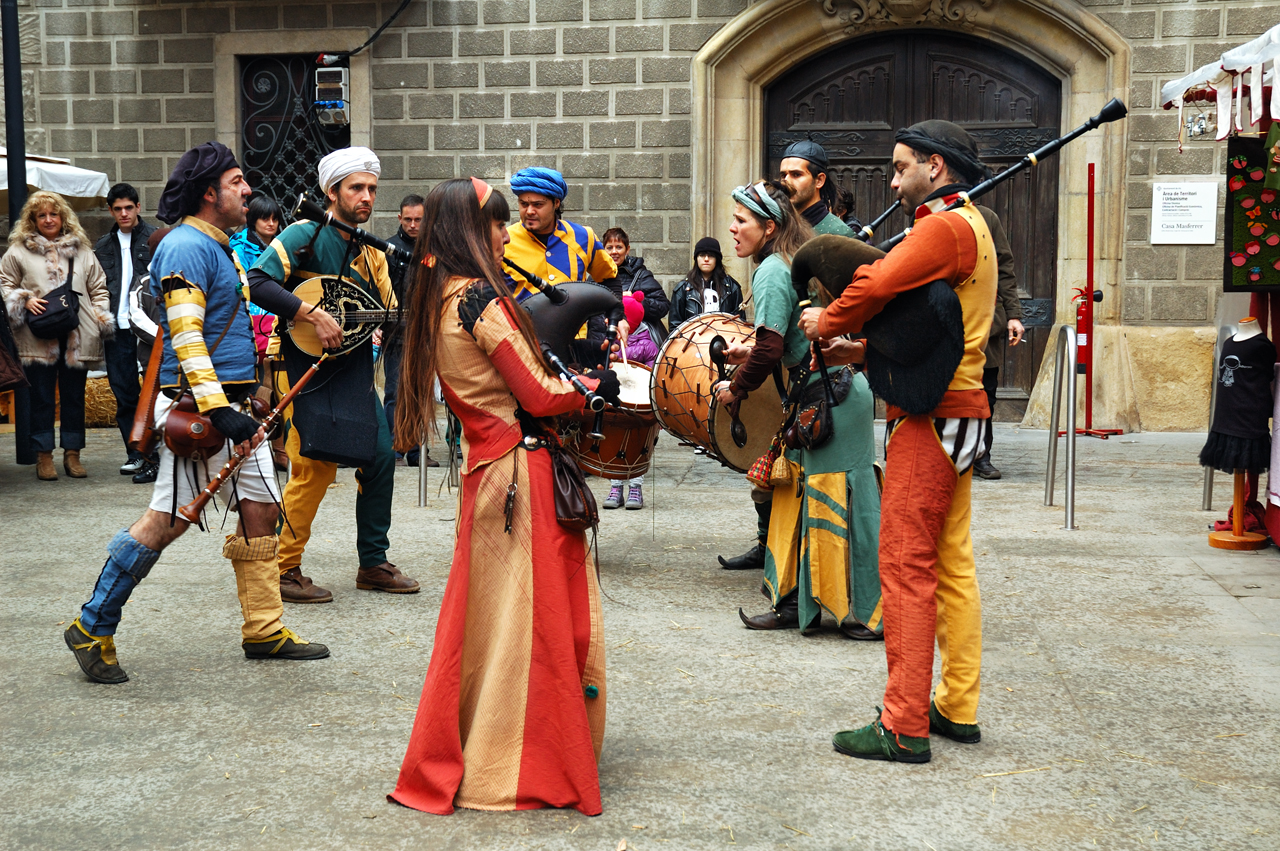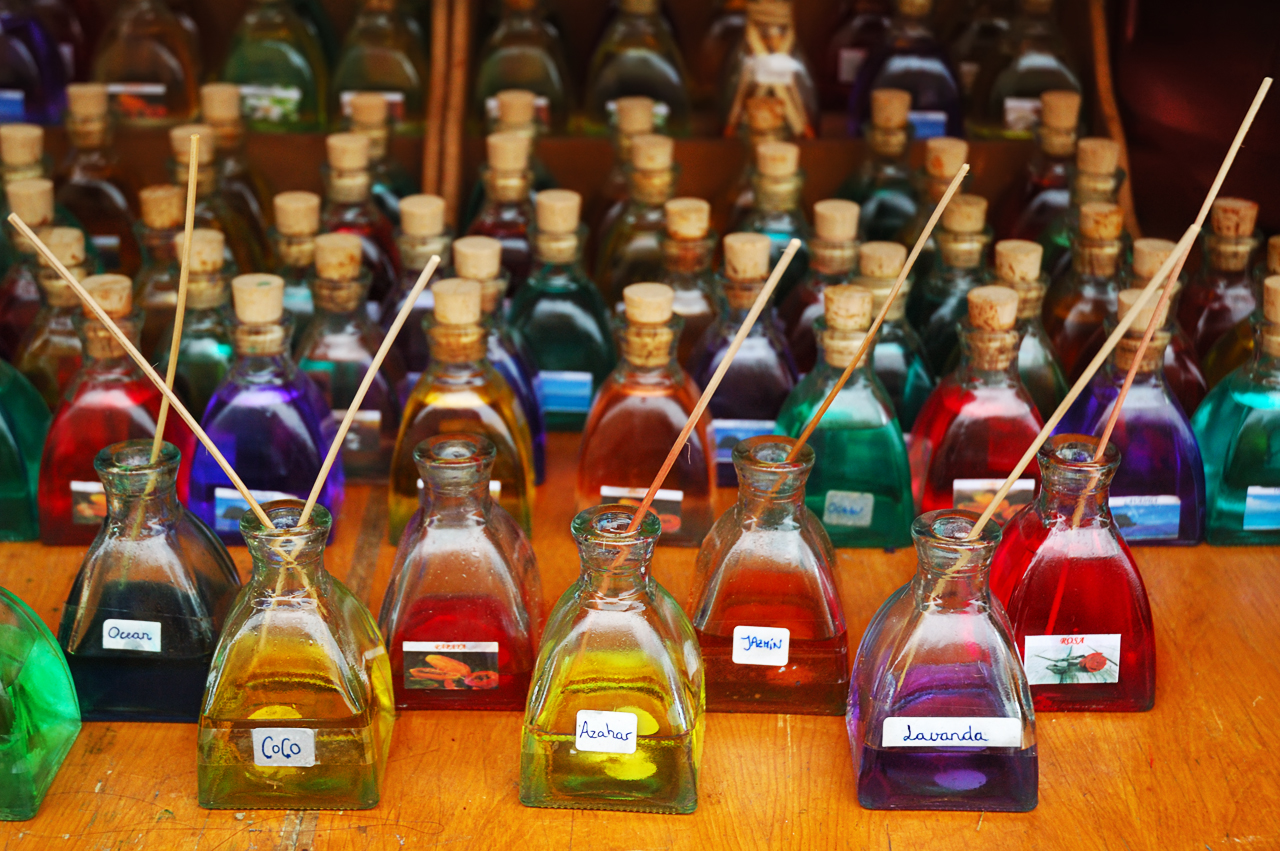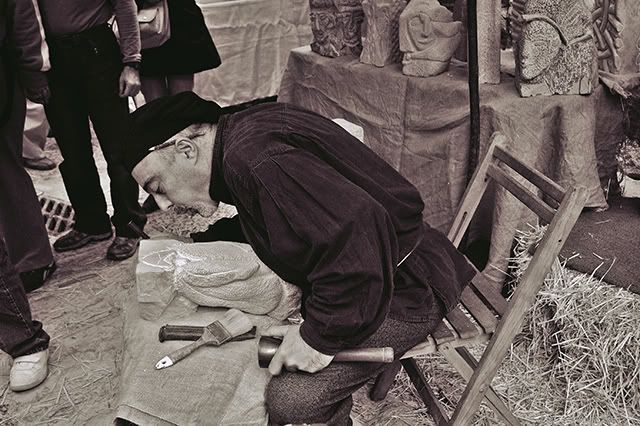Barcelona photos: Daily photographs of Barcelona, Spain. Pictures of a modern city with travel tips in a personal photoblog. A photography and travel site. Art, architecture, people and traditions. Travel to Barcelona through my camera, know more about our city and towns nearby. Welcome!
Wanna be featured?
Showing posts with label medieval. Show all posts
Showing posts with label medieval. Show all posts
August 15, 2025
Barcelona Cathedral’s Pietà: A Gothic Masterpiece with a Secret Past
Labels:
art,
barcelona cathedral,
barri gotic,
casc antic,
cathedral,
gothic quarter,
history,
medieval,
sculpture
Location: Barcelona, Spain
Carrer de la Pietat, Ciutat Vella, 08002 Barcelona, Spain
September 12, 2022
Sant Jordi Fountain Faucet at Barcelona Cathedral Cloister
La Font de Sant Jordi (Saint George Fountain), of which Barcelona Photoblog brings you this faucet detail, is one of the most renown fountains in the city as it is part of the impressive cloister at Barcelona Cathedral, perhaps the second most visited sacred place after Sagrada Familia.
Although the gothic Cathedral of the Holy Cross and Saint Eulalia, built in 150 years, is appealing enough once you set foot on the main nave it wouldn't be that remarkable without its cloister, a well-balanced quiet place, where light, water plants, magnolias, palm trees, geese and medieval fountains create that utmost joyous design that we now prefer to call feng shui.
The fountain as such, crowned by a 1970 figure (by Emili Colom) of Sant Jordi on his horse on top of a mossy rock, was built under the supervision of architect Andreu Escuder in 1449. Nevertheless, the water was spouting here directly from the mountain of Collserola since 1356.
This octogonal shaped architectural piece is no ordinary fountain, not only because of these beautiful faucets with intriguing faces that might as well represent archangels or demons on whose rump a small kid figure seems to be riding a bird or a horse (this can be the subject of rivers of ink for an unleashed imagination), but because since 1637 during every Corpus Christi Feast it is adorned with flowers and an empty egg that dances frantically on the water jet. Such tradition is known as L'ou com balla (previous post).
Here are some more pictures of the Fountain of Sant Jordi.
Labels:
architecture,
art,
barcelona cathedral,
barcelona traditions,
faucet,
font de sant jordi,
fountain,
l'ou com balla,
medieval,
sculpture,
water tap
Location: Barcelona, Spain
Pla de la Seu, s/n, 08002 Barcelona, Spain
March 25, 2019
A Travel to Miravet Castle in Tarragona, Spain



Declared as a site of national interest and opened to the public in 1994, the Castle of Miravet is one of those secret places of Catalonia that are a must in an avid traveler's agenda, only 50 kms away from famous Costa Dorada!
As you can appreciate above, the castle was built on a bend of the Ebro river and dominates over a landscape of fertile lands where vineyards are predominant.
From the rock on which it stands one cannot avoid to recall those centuries of history behind the renown building and the villagers that enjoyed such remarkable views.
From Iberians to Muslims, from Templars to feudal lords, from Carlists to Bourbons, from Nationalists to Republicans, each of them had the chance to rejoice in the same landscape.
There were people here, according to the oldest remains found, since 2 BC, Iberians to be precise. Later, came the Arabs or the Moors, as they were known in Al-Andalus, the name they gave to their dominions in Spain. By the 11th century, they had built this impressive defensive fortress which was expanded in coming decades in order to protect themselves from military incursions of groups organized by powerful Catalan counts. Bear in mind that, after many years of prosperity toiling these lands, the time came when only Miravet and Siurana remained as the last redoubts of the Moorish period.
It was Ramon Berenguer IV, one of those feudal lords, who took the castle from them and gave it to the Templar Knights. For almost two centuries they dominated the fortress which they improved until 1307, year in which, the Spanish Inquisition, instigated by Philip the Handsome, King of France, starts persecuting Templars in France as a result of which James II of Catalonia and Aragon sets on doing the same in Miravet. After two months of resistance to the siege imposed by James, Templars are imprisoned and sent to trials by the Inquisition. The order of the Temple is dissolved and their assets confiscated and transferred to the order of Hospital de Sant Joan de Jerusalem also known as Hospitallers.
But if you want to know more about this Romanesque building and you are fond of Catalonia castle tours it is better that you visit this place and its idyllic environment.
Miravet Castle
Contact details
Carrer del Castell, s/n
+34 977 407 368
Miravet, Tarragona (Catalonia)
miravet.cultura@gencat.cat
Location
Autonomous region: Catalonia
Province/Island: Tarragona
Practical information
Schedule
From Jun 01 to Sep 30
From 10:00 AM to 8:00 PM
Contact details
Carrer del Castell, s/n
+34 977 407 368
Miravet, Tarragona (Catalonia)
miravet.cultura@gencat.cat
Location
Autonomous region: Catalonia
Province/Island: Tarragona
Practical information
Schedule
From Jun 01 to Sep 30
From 10:00 AM to 8:00 PM
From Oct 01 to Dec 15
From 10:00 AM to 5:30 PM
From Dec 16 to Feb 28
From 10:00 AM to 4:00 PM
From Mar 01 to May 31
From 10:00 AM to 5:30 PM
Prices
General: €3,50
Reduced: €2,50
ICOM members and associations: Admission free
From 10:00 AM to 5:30 PM
From Dec 16 to Feb 28
From 10:00 AM to 4:00 PM
From Mar 01 to May 31
From 10:00 AM to 5:30 PM
Prices
General: €3,50
Reduced: €2,50
ICOM members and associations: Admission free
Labels:
castle,
catalan towns,
Catalonia towns,
costa dorada,
medieval
Location: Barcelona, Spain
43747 Miravet, Tarragona, Spain
March 07, 2011
Medieval Musicians at the Annual Medieval Market in Vic, Osona

There are occupations that do not seem to change much throughout centuries. Take a look at these musicians dressed in medieval attires impersonating those wandering minstrels going from town to town entertaining the crowd for gratuities and think of how this eventually derived into today's buskers. Yes, street musicians keep working for peanuts and having a hard life. This image was taken last December in Vic, Osona during the local medieval market held each year. Check this video found on YouTube showing more or less what the medieval market looked like. In fact the old city streets do create a fantastic scenario to get the idea about medieval times.
February 28, 2011
Ambient Essential Oil

Ambient essential oils used in aromatherapy for uplifting the spirit and the mind vary in scents and colors, extracted as they are from different parts of a plant be it leaf, seed, wood, root, flower or resin among others. They have been part of alternative medicine and folk wisdom since time immemorial. That is why, it is not rare to find scented oil stands in medieval fairs around Catalonia, like this one in Vic, Osona (Barcelona Province).
December 07, 2006
Stonecutter at Súria's Medieval Market

I felt like black and white today so I selected this stonecutter in the Medieval Fair at Súria near Barcelona (see the original color image here). True craftsmen disguised for the occasion showed you the secrets of old medieval trades. There was the basket weaver, the coal burner, the potter, the weaver, the glassblower and a long list of other crafts represented. Stonecutters or stonecarvers were highly appreciated and well paid at the time and their history is linked to the masons lodges of the middle ages. Learn the basics of stone carving art. An amusing reading to learn about medieval crafts, especially stonemasonry is The Pillars of the Earth by Ken Follett. I couldn't help thinking of Tom Builder when I saw this man.
Subscribe to:
Comments (Atom)
Labels
architecture
(166)
modernisme
(84)
art nouveau
(75)
gaudi
(74)
food
(68)
flowers
(63)
street artist
(55)
sculpture
(49)
las ramblas
(42)
barri gotic
(40)
sagrada familia
(34)
dancers
(29)
beach
(28)
human statue
(28)
amusement park
(27)
port
(27)
art
(26)
mosaic
(25)
tibidabo
(25)
guell
(23)
sant pau
(23)
barcelona streets
(22)
tips
(22)
Catalan traditions
(21)
barcelona shop
(21)
market
(21)
montjuic
(21)
gothic quarter
(20)
carnival
(18)
domenech i montaner
(18)
la boqueria market
(18)
opinion
(18)
christmas
(17)
costa brava
(17)
ciutadella
(16)
maremagnum
(16)
folklore
(15)
classic
(14)
history
(14)
balcony
(13)
catalan towns
(13)
modernist
(13)
sea
(13)
street art
(13)
barcelona hotels
(12)
casa modernista
(12)
catalan art nouveau
(12)
costumes
(12)
graffiti
(12)
la pedrera
(12)
stained glass
(12)
casa mila
(11)
door
(11)
fountain
(11)
la rambla
(11)
barcelona market
(10)
ceiling
(10)
architects
(9)
barcelona port
(9)
bikes
(9)
chocolate
(9)
crafts
(9)
paper mache
(9)
pedralbes
(9)
port aventura
(9)
vintage
(9)
cosmocaixa
(8)
harbor
(8)
hotel
(8)
motorbike
(8)
passeig de gracia
(8)
arc de triomf
(7)
classic cars
(7)
dali
(7)
gracia
(6)
gracia quarter
(4)
palau de la musica
(4)
accommodation
(3)
barcelona bar
(3)
casa batllo
(2)
cheese
(2)
cruises
(2)
ham
(2)
wine
(2)
hostel
(1)
parc guell
(1)
picasso
(1)

